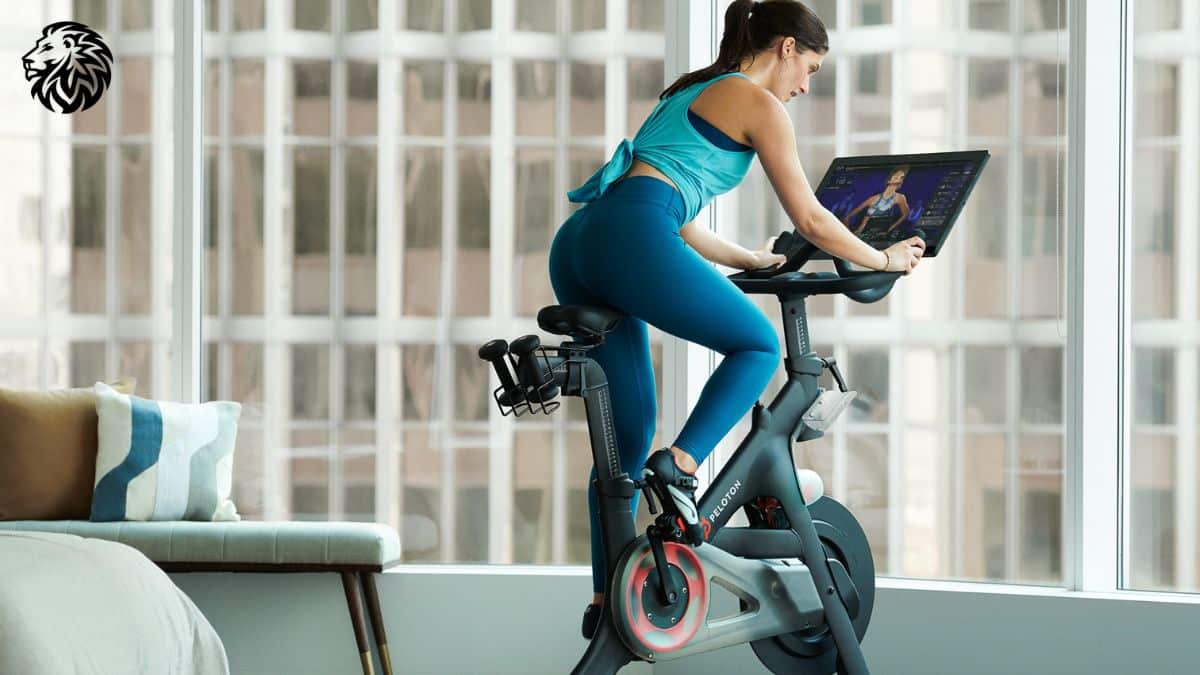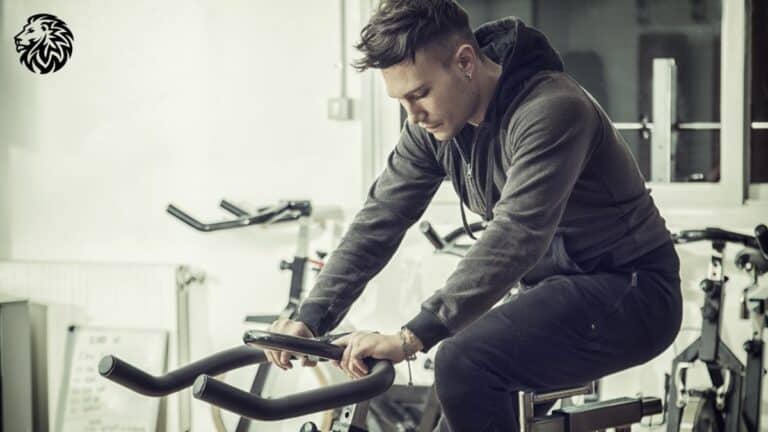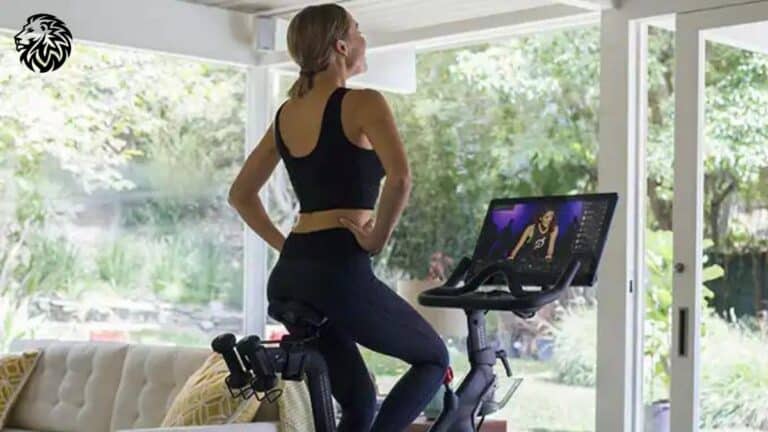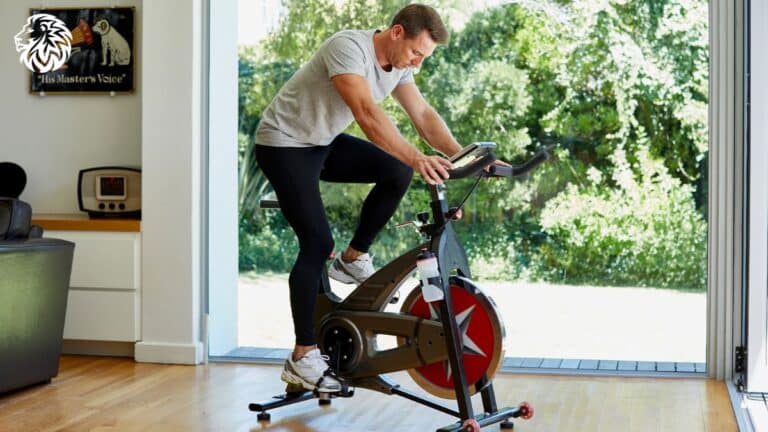In the vibrant world of fitness, stationary bikes carve out a niche that combines accessibility, user-friendliness, and a robust avenue for cardiovascular development. With its saddle, pedals, and manual or electronic resistance control, stationary bikes have become a steadfast option for individuals seeking to embark on a fitness journey, or for seasoned fitness enthusiasts to maintain or amplify their conditioning. The allure lies not only in its straightforwardness to use but also in the capacity to offer a hearty workout without imposing undue stress on the joints, making it a viable choice for a vast demographic of people.
The emphasis on the duration of exercise on a stationary bike, or any workout routine for that matter, hinges upon a simple yet crucial principle: achieving the desired fitness outcomes. Whether one is pedaling towards weight loss, enhancing cardiovascular health, fortifying muscular endurance, or pursuing an amalgamation of fitness goals, the length of each biking session emerges as a pivotal factor that can dictate the efficiency and efficacy of the workout. Consequently, as we steer through the path of understanding the optimal workout duration on a stationary bike, we shall encompass various aspects including fitness objectives, workout intensity, and individual physical considerations, aiming to formulate a guide that resonates with bikers of all levels.
Embarking on this exploration, we shall pedal through various sections, each illuminating distinct facets of stationary biking, and how users can tailor their ride durations to align with their goals, capabilities, and overall lifestyle. From beginners to seasoned cyclists, this guide aspires to shed light on the harmonization of workout duration and intensity, thereby ensuring that every spin of the pedal is a step towards a healthier, fitter self. Let the journey begin!
Determining Your Fitness Goals

Embarking on a fitness journey through the avenue of stationary biking requires a fundamental step: defining your goals. The established objectives guide your regimen, dictating the frequency, intensity, and duration of your workouts. Understanding your fitness aspirations can illuminate the pathway to strategically designed biking sessions that not only enhance your physical well-being but also elevate your mental stamina. Let’s delve into some predominant goals individuals often navigate towards and explore how stationary biking can be manipulated to cater to each domain.
- Weight Loss
- A formidable ally in the battle against the bulge, stationary biking can burn substantial calories when incorporated into a consistent fitness routine.
- Crafting workouts: Aligning workout duration and intensity to create a calorie deficit, utilizing both steady-state and high-intensity interval training (HIIT) to maximize caloric burn.
- Cardiovascular Health
- The rhythmic pedaling movement and control over resistance make stationary bikes a stellar option for enhancing heart health and lung capacity.
- Crafting workouts: Prioritizing moderate-intensity sessions of adequate duration (at least 150 minutes per week, as per American Heart Association guidelines) to fortify cardiovascular endurance without overstraining the system.
- Muscle Endurance and Strength
- Beyond cardiovascular benefits, stationary biking also engages various muscle groups, fortifying legs, and core muscles, and, when utilizing handlebars actively, the upper body.
- Crafting workouts: Leveraging resistance settings to challenge the muscles, opting for periods of higher resistance pedaling to foster muscular strength and endurance, and interspersing with lower resistance to maintain a balance.
- Rehabilitation or Low-Impact Exercise
- With its gentleness on the joints, stationary biking often emerges as a chosen modality for rehabilitation post-injury or for those seeking a low-impact exercise option.
- Crafting workouts: Ensuring a delicate balance by keeping durations and resistance at a level that promotes movement without exacerbating injuries or imposing undue stress on vulnerable joints.
Identifying your predominant goal(s) morphs into a compass, guiding your stationary bike workouts towards a structured, purpose-driven routine. It provides a frame within which workout durations can be molded, ensuring that every minute spent pedaling propels you closer to your desired fitness outcomes. The ensuing sections of this guide will further elucidate how to sculpt your workouts, providing insights into maximizing the benefits drawn from your time on the stationary bike, aligned seamlessly with your unique fitness objectives.
Benefits of Stationary Biking
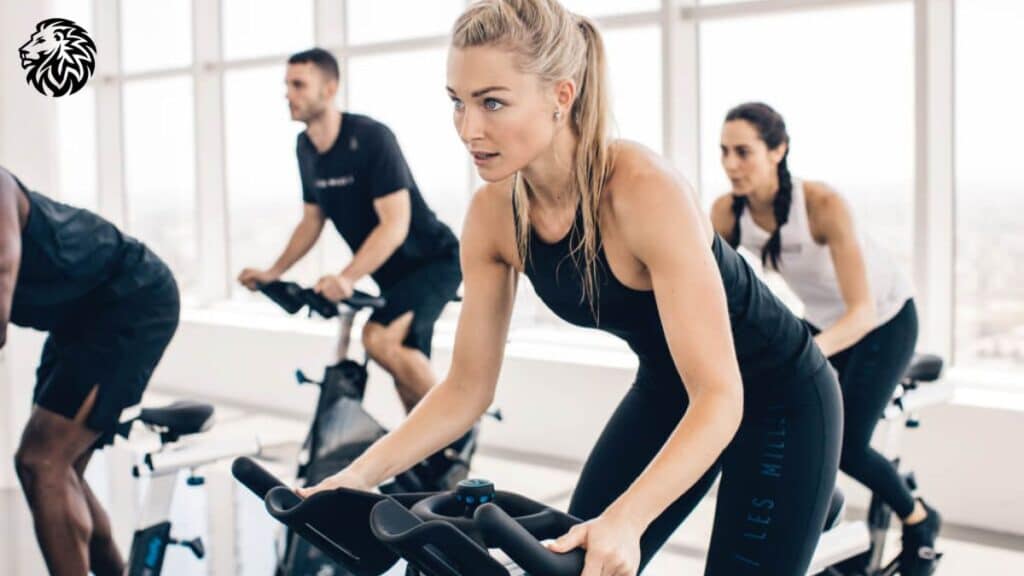
When discussing fitness, stationary biking often emerges as a preferred exercise modality, and its popularity is no accident. This invigorating activity holds a plethora of benefits that extend across a wide demographic, offering health and fitness dividends to beginners, seasoned athletes, and those in rehabilitation alike. With its accommodating nature and multifaceted advantages, let’s pedal through some of the salient benefits of embracing stationary biking in your workout regimen.
- Low Impact on Joints
- Safe Haven for the Joints: The cycling motion ensures that your joints, especially knees, ankles, and hips, are not bearing the brunt of high-impact exercises, providing a safer alternative for those with joint issues or undergoing rehabilitation.
- Aging Gracefully: For older adults, a low-impact exercise like stationary biking provides a means to stay active, promoting joint mobility without subjecting them to excessive stress.
- Efficient Calorie Burning
- Energetic Expenditure: Stationary biking, especially when modulating between various intensities, proves to be a potent caloric burner, aiding in weight management and fitness.
- Metabolic Boost: Consistent cycling can enhance metabolic rate, ensuring you continue to burn calories even post-workout, furthering your weight loss or weight management endeavors.
- Versatility (Varying Resistance and Workout Styles)
- Adaptable Resistance: The ability to tweak resistance levels allows you to tailor your workout from a leisurely ride to a challenging uphill battle, catering to varying fitness levels and goals.
- Varied Workout Styles: From heart-pounding HIIT sessions to leisurely endurance rides, stationary biking provides a canvas for diverse workout styles, ensuring you can alternate between intensities, durations, and styles to keep things fresh and your body continually adapting.
The Inclusive Appeal: One cannot overlook the inclusive nature of stationary biking. It welcomes individuals with varying fitness levels and goals, offering a platform where one can commence their journey towards enhanced physical well-being. The following sections will delve deeper into understanding how to leverage these benefits optimally by aligning workout duration and intensity with your individual goals, ensuring that every moment spent on the bike propels you towards a healthier, fitter future.
Whether you seek the invigoration of an intense cycling session, the tranquility of a moderate ride, or the therapeutic motion for your joints, stationary biking envelops these desires into a single, effective workout modality. So, let’s gear up and ride towards a thorough exploration of how to mold your cycling sessions to bring you closer to your defined fitness goals!
General Recommendations for Workout Duration

Embarking on a journey with your stationary bike involves tailoring your workouts to align with your current fitness level, ensuring that they are neither too lax to induce change nor too intense to risk burnout or injury. Striking this balance necessitates a general guideline for workout durations that cater to different fitness levels: beginners, intermediate, and advanced cyclists. Let’s delve into these recommendations, providing a foundational guide upon which to build your cycling regimen.
- Beginners: 20-30 minutes
- Gentle Initiation: Beginning with shorter durations allows your body to acclimate to the new exercise modality, ensuring that muscles, joints, and cardiovascular systems are gradually introduced to the activity.
- Focus on Form and Comfort: Utilizing this time to get accustomed to the bike’s settings, ensuring proper form and posture to mitigate the risk of injury.
- Gradual Elevation: Start with a comfortable resistance, slowly integrating small increments in both duration and intensity as your fitness improves.
- Intermediate: 30-45 minutes
- Balancing Intensity and Duration: At this stage, the focus morphs towards finding a balance between extending workout duration and amplifying intensity.
- Varied Workouts: Incorporate diversity in your sessions by blending steady-state cardio with intervals of increased intensity, ensuring comprehensive cardiovascular and muscular engagement.
- Listening to the Body: Be mindful of your body’s responses, ensuring that the increased duration and intensity do not herald onset of overtraining or injury.
- Advanced: 45-60 minutes or more
- Maximized Training: Advanced cyclists often aim to maximize their training, involving longer, more intense sessions that can significantly boost both cardiovascular and muscular endurance.
- Enhanced Recovery: At this stage, recovery becomes pivotal. Ensuring adequate rest days and implementing recovery strategies become vital to sustain longer workout durations.
- Strategic Planning: Constructing a well-rounded training plan that involves varying workout intensities throughout the week, ensuring sustained progress without plateauing or regressing.
Underpinning Principle: Individuality While these recommendations serve as a general guide, it’s pivotal to underscore the importance of personalizing workout durations based on individual responses and requirements. Always prioritize quality over quantity, ensuring that each minute on the bike is spent efficiently, optimizing your physical gains without jeopardizing health and well-being.
In subsequent sections, we shall explore further aspects that will aid in customizing these guidelines to your unique needs, thereby sculpting a stationary biking routine that is not merely a reflection of generalized recommendations but a manifestation of your personal goals, capabilities, and journey towards enhanced fitness. Let’s keep pedaling forward!
Factors Influencing Workout Duration

Diving deeper into the essence of structured stationary biking workouts, it’s imperative to understand that numerous factors come into play, shaping the optimal duration of each session. Recognizing and comprehending these variables is crucial to sculpting a workout routine that not only propels you towards your goals but also safeguards your wellbeing. Let’s navigate through these pivotal factors, exploring how they intertwine with workout duration.
- Intensity of the Workout
- Dynamic Relationship: Intensity and duration share a dynamic relationship – as intensity ascends, duration might need to be modulated to prevent overexertion and promote recovery.
- High-Intensity Interval Training (HIIT) vs. Steady-State Cardio
- HIIT: Characterized by bursts of high-intensity work followed by rest or lower-intensity periods, typically permitting shorter overall workout duration due to its exhaustive nature.
- Steady-State Cardio: Engaging in a consistent, moderate intensity usually allows for longer workout durations, promoting endurance and cardiovascular health.
- Frequency of Workouts Per Week
- Regular Engagements: The number of sessions per week influences each workout’s optimal duration, ensuring you’re not overtraining or undermining recovery.
- Balancing Recovery and Training
- Rest Is Crucial: Adequate recovery is paramount to prevent burnout and injuries, demanding a strategic distribution of workout durations throughout the week.
- Active Recovery: Sometimes, incorporating lighter, shorter sessions can aid recovery while maintaining consistency in your routine.
- Individual Fitness Level and Age
- Personalized Durations: Your age and fitness level crucially impact your capacity for various workout durations and intensities.
- Adapt and Modify: Adapting durations to accommodate your evolving fitness levels ensures sustained progress and minimizes risk.
- Listening to Your Body
- Heeding Signs: Paying attention to physical and mental cues can guide adjustments in workout duration and intensity.
- Flexibility in Routine: Be willing to modify your planned duration in response to how your body feels during a particular session.
- Other Physical Activities During the Day or Week
- Cumulative Load: Consideration for other physical activities is crucial to prevent cumulative overload and promote balanced fitness development.
- Complementary Planning: Ensure that your biking sessions complement, rather than conflict with, your overall physical activity routine.
- Balancing Overall Exercise Load
- Harmonizing Elements: Ensure a harmonic relationship between workout duration, intensity, frequency, and type to craft a balanced, sustainable fitness regimen.
- Avoiding Burnout: Meticulous planning and listening to your body will safeguard against overtraining and facilitate a balanced, healthy approach to fitness.
Understanding these variables and how they intertwine will illuminate the pathway towards a balanced and effective stationary biking regimen. As we proceed, we will delve into strategies to maximize the benefits derived from your workouts, providing insights into aligning these factors with your unique needs and objectives. The road to optimal fitness is carved by both energetic workouts and insightful planning – let’s continue to pedal forward with wisdom and vitality!
Understanding Workload and Resistance

When navigating the terrain of stationary biking, the concepts of workload and resistance stand out as critical components that shape the overall efficacy and impact of each workout. The oscillation between time spent on the bike and the level of resistance encountered during the ride crafts a dynamic that ultimately determines the outcomes achieved. As we delve into these domains, let’s dissect how time and resistance interplay and explore their respective impacts on aspects like calorie burn and muscle engagement.
Time vs. Resistance: What Matters More?
- Balanced Approach
- Both time and resistance are pivotal, and optimizing workouts often involves finding a balanced interplay between the two, which caters to your specific fitness goals and current level.
- Dependent on Goals
- Weight loss might necessitate longer durations or higher intensities, whereas muscle strengthening may demand higher resistance even in shorter sessions.
- Quality Over Quantity
- Neither parameter should overshadow the importance of maintaining quality and consistency in your workouts.
The Role of Resistance in Calorie Burn and Muscle Engagement
- Calorie Burn
- Amplified Expenditure: Higher resistance demands more energy, hence escalating calorie burn per unit of time.
- Intensity Peaks: Engaging in periods of heightened resistance, especially in a HIIT format, can spike metabolic rate and perpetuate calorie burn post-workout.
- Muscle Engagement
- Strengthening and Toning: Elevated resistance challenges the muscles, particularly in the lower body, cultivating strength and enhancing tonality.
- Muscular Endurance: Sustained periods of moderate resistance nurture muscular endurance, preparing your muscles to perform optimally over extended durations.
Strategies for Navigating Time and Resistance
- Periodization: Employ a periodized plan that systematically modulates time and resistance, ensuring varied stimuli for your body and mitigating plateaus.
- Diversity in Training: Engage in sessions that accentuate either parameter – some days focusing on longer, moderate-resistance rides, while others center around shorter, high-resistance bursts.
- Adaptive Planning: Be nimble in adapting your planned workouts based on your body’s feedback, ensuring that you steer clear of overtraining and foster sustainable development.
Crafting an efficacious stationary biking regimen involves entwining an understanding of both time and resistance, ensuring that workouts are neither overwhelmingly exhaustive nor under-stimulating. By embracing a structured yet flexible approach, you ensure that your rides are not just physically invigorating but also strategically aligned with your overarching fitness objectives. As we pedal onward in our fitness journey, this nuanced understanding of workload and resistance becomes the compass that directs every spin, push, and sweat droplet towards a healthier, fitter, and more empowered self. Let’s continue to ride with intentionality and insight, ensuring that every moment spent on the stationary bike is a stride towards our desired fitness horizons!
Tips to Maximize Your Time on the Stationary Bike

Riding a stationary bike provides a gateway to numerous health and fitness benefits, but how can one make each pedal count? Maximizing your time on the stationary bike transcends simply logging in minutes; it encapsulates a blend of strategic planning, varied training, and mindful practices that holistically enhance the value derived from each session. Let’s delve into some potent tips that will ensure your time spent on the stationary bike is not merely quantifiable in minutes but qualifiable in impactful, progressive workouts.
Incorporating Interval Training
- Bursts of Intensity
- Include segments of intensified effort followed by recovery periods, enhancing both aerobic and anaerobic capacities.
- Variability in Intervals
- Experiment with various interval structures – differing durations, intensities, and recovery times – to keep the body adaptively challenged.
Using Heart Rate as a Guide
- Target Zones
- Identify and leverage different heart rate zones – such as fat-burning, aerobic, and anaerobic zones – to tailor workouts to specific objectives.
- Monitoring Effort
- Utilize heart rate monitors to gauge the intensity of your workouts, ensuring alignment with your intended training goals and preventing inadvertent overexertion.
Incorporating Cross-Training with Other Exercises
- Holistic Development
- Combine stationary biking with other forms of exercise, such as strength training or yoga, to cultivate a well-rounded fitness profile.
- Injury Prevention
- Engaging in varied forms of exercise distributes physical demands, mitigating the risk of overuse injuries and promoting balanced muscle development.
Keeping Workouts Varied and Interesting
- Creative Sessions
- Dabble in different workout formats, such as hill climbs, speed intervals, or endurance rides, to sustain interest and continually challenge the body.
- Entertainment and Engagement
- Fuse entertainment with exercise – listen to music, watch videos, or join virtual classes to make each session enjoyable and engaging.
- Progress Tracking
- Implement ways to track your progress, such as logging distance, speed, or resistance levels, to provide motivation and tangible markers of development.
Maximizing your time on the stationary bike necessitates a blend of strategic, varied, and enjoyable workouts that not only nurture physical adaptation but also sustain your interest and engagement. By integrating intervals, utilizing heart rate insights, amalgamating cross-training, and instilling variety, each session morphs from a mere workout into a step forward in your fitness journey. As we continue to pedal towards our health and fitness goals, let’s ensure each moment on the bike is sculpted by intention, wisdom, and a dash of fun, propelling us towards our aspirations with vigor and vitality!
Potential Risks of Overtraining
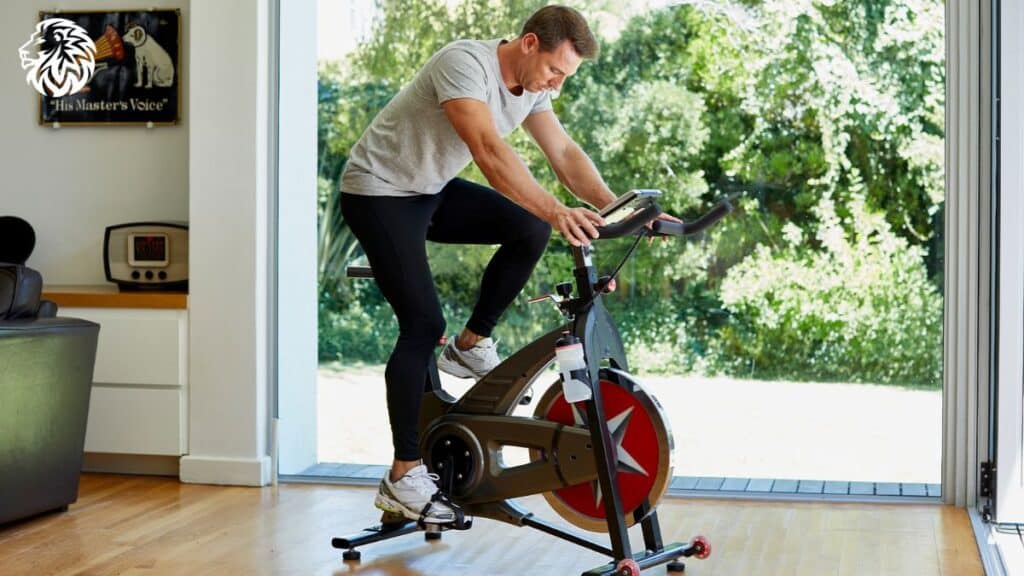
Engaging in a committed and consistent fitness routine is unequivocally beneficial, yet it’s pivotal to acknowledge the lurking threat of overtraining. Overreaching in our pursuits for health and fitness can inadvertently spawn a cascade of physical and mental setbacks, hindering rather than aiding our progress. Within the realm of stationary biking, like any other exercise modality, understanding, recognizing, and mitigating the risks of overtraining becomes paramount to ensuring a sustainable and healthy fitness journey.
Recognizing Signs of Overtraining
- Physical Manifestations
- Fatigue: Persistent tiredness that isn’t alleviated by rest.
- Decreased Performance: Diminishing results or stagnation despite increased effort.
- Muscle Soreness: Prolonged and unusual muscle pain post-workout.
- Mental & Emotional Indicators
- Irritability: Unexplained fluctuations or negativity in mood.
- Motivation Dip: Diminishing enthusiasm or dread towards workouts.
- Sleep Disruptions: Difficulties in falling asleep or maintaining a deep sleep despite physical exhaustion.
- Physiological Signals
- Altered Heart Rates: Elevated resting heart rate or unusual heart rate responses during workouts.
- Immune Suppression: Frequent illness or a notable decrease in immunity.
Importance of Rest and Recovery
- Physical Rejuvenation
- Rest days facilitate muscle repair, glycogen replenishment, and overall bodily recovery, fostering sustained progress and injury prevention.
- Mental Respite
- Mental fatigue is real and recovery time can also rejuvenate the mind, rekindling motivation and mental focus for future workouts.
- Enhanced Performance
- Contrary to deterring progress, adequate recovery can amplify performance, ensuring that subsequent workouts are executed with optimal energy and vitality.
Balancing Intensity and Duration for Sustainable Results
- Strategic Planning
- Employ a well-structured plan that equitably distributes intensive sessions, moderate workouts, and recovery days throughout the week.
- Quality Over Quantity
- Prioritize the quality of workouts over mere duration or frequency, ensuring that each session is effectively contributing towards your goals without inducing excessive stress on the body.
- Listen and Adapt
- Be attuned to your body’s feedback and be willing to adapt your workout regimen accordingly, ensuring that the balance between intensity, duration, and recovery is perpetually aligned with your current physical state and needs.
Overtraining is not merely a physical phenomenon but a holistic impediment that stifles physical, mental, and emotional wellbeing. Recognizing its signs and adhering to principles of rest and balanced training constructs a safeguard against its insidious onset. As we pedal forward in our stationary biking endeavors, let’s ensure that each stride is taken with mindful consideration towards sustaining a healthy, balanced, and joyous journey towards our fitness aspirations, where progress is carved not by relentless exertion, but by harmonious, strategic, and mindful practices. May our rides be vigorous, fruitful, and above all, healthful in every stride!
Conclusion
In the dynamic realm of fitness, where trends swiftly come and go, the stationary bike remains a steadfast and versatile ally in our quest for health and well-being. As we’ve journeyed through understanding the intricacies of optimizing workouts on this formidable apparatus, several pivotal insights emerge that shape our path forward.
The Art of Individualization: Every individual is a unique amalgamation of physical prowess, endurance, goals, and limitations. Hence, a one-size-fits-all approach to workout durations or intensities is not just ineffectual, but potentially detrimental. Embracing the art of individualization, tailoring each pedal, resistance, and interval to one’s unique needs and aspirations, transforms the stationary bike from a mere exercise machine to a personalized conduit for holistic wellness.
Consistency Over Intensity: While it’s exhilarating to push boundaries, the foundational bedrock of any fitness journey is consistency. It’s the rhythmic cadence of regular workouts, interspersed with essential rest, that crafts sustained progress. Coupled with this consistency is the principle of gradualism—taking incremental steps, escalating intensity, duration, or resistance judiciously, ensures that progress is both tangible and sustainable.
The Stationary Bike: A Flexible Fitness Marvel: Among the vast arsenal of fitness tools at our disposal, the stationary bike stands out for its sheer adaptability. Whether it’s the beginner taking their inaugural strides into the world of fitness, the seasoned athlete seeking intense interval training, or someone in rehabilitation seeking low-impact engagement, the stationary bike graciously caters to all. Its flexibility extends beyond just physical exertion, offering avenues for mental relaxation, entertainment, and even social engagement in group classes or virtual rides.
In encapsulation, as we pedal onwards in our fitness odyssey, the stationary bike offers not just a seat, but a platform—moldable, adaptable, and endlessly supportive. It beckons us to ride with intention, to tune into our individual needs, and to celebrate every rotation as both an achievement and a stride towards greater health. Let us ride with gratitude, purpose, and joy, knowing that with every session, we’re not just covering miles, but crafting moments of wellness, empowerment, and growth. Here’s to many more rides ahead, filled with vigor, insight, and unwavering enthusiasm!
